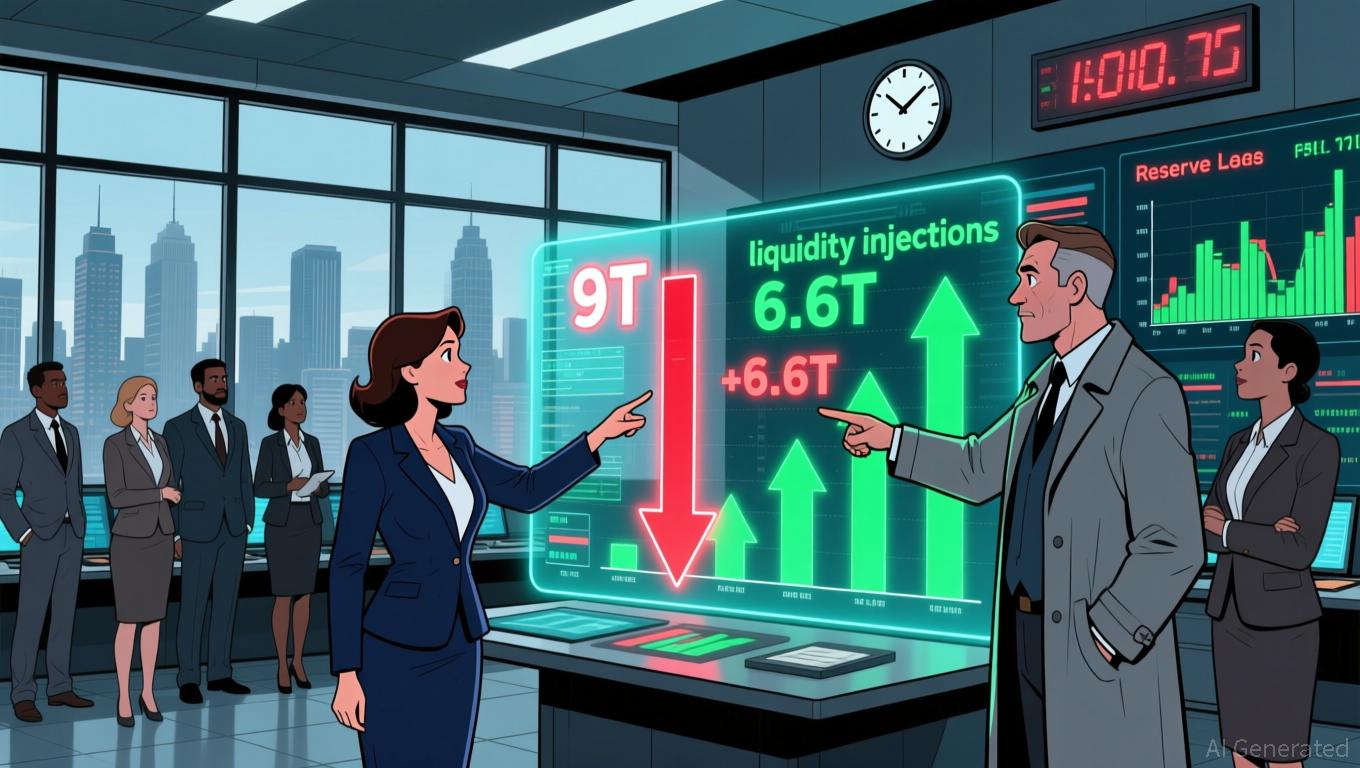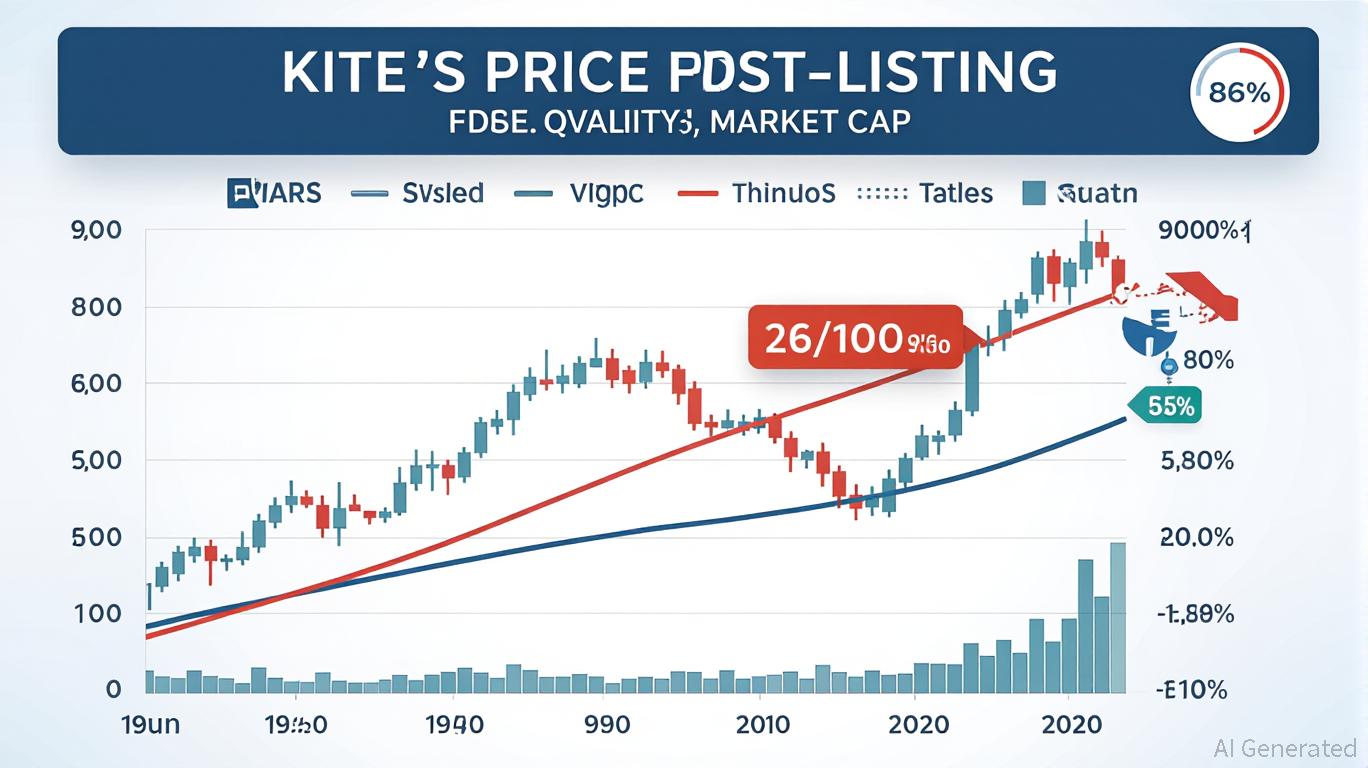Fed Faces a Pivotal Choice: Managing Liquidity or Controlling Inflation
- Fed may expand balance sheet to address liquidity needs amid shrinking reserves, signaling potential end to 3-year QT program. - Officials pause QT as $6.6T reserves deemed "somewhat above ample," but warn of risks from inflation above 2% target and market volatility. - Governor Mester cautions against aggressive rate cuts, citing economic rebound risks and fiscal/regulatory factors boosting 2026 growth outlook. - External pressures including government shutdown delays and stablecoin demand growth compli
The Federal Reserve is at a critical crossroads as it works to strike a balance between ensuring sufficient liquidity and keeping inflation in check. In a recent speech, John Williams, President of the New York Fed, discussed the possibility that the central bank could soon move to increase its balance sheet—a step that would mark a departure from its prolonged period of quantitative tightening (QT).

The Fed’s recent decision to halt QT, announced last week, signals its view that current reserve levels are adequate to keep money markets steady without providing too much stimulus. Williams stated that the three-year process of reducing the balance sheet “has gone as planned,” but he also emphasized the need to keep a close watch on market shifts to identify when reserves might reach “ample” territory
Elsewhere, Federal Reserve Governor Loretta Mester has urged caution regarding aggressive rate cuts in December, suggesting that the economy is set for a recovery in early 2026. Mester cited factors such as government spending, regulatory adjustments, and the delayed impact of earlier rate hikes as key influences. However, she cautioned that further rate reductions could risk overheating the economy, especially since inflation remains above the Fed’s 2% goal. Her remarks reflect a broader hesitancy among policymakers, who have indicated a preference for a gradual approach to loosening policy
The Fed’s efforts are further complicated by outside influences, including geopolitical tensions and unpredictable markets. For example, the recent U.S. government shutdown interrupted the release of economic data, making the Fed’s policy decisions more challenging. Analysts at First Abu Dhabi Bank observed that such disruptions could prompt the Fed to postpone rate cuts in December to maintain its policy credibility
Market responses to these developments have been varied. While the Fed’s pause in QT has brought some stability to money markets, digital assets have seen significant outflows, with
As the Fed looks ahead to its next policy meetings, attention will remain on how effectively it can address these complex challenges while upholding its dual mandate of price stability and full employment. The way forward will depend on ongoing evaluations of reserve requirements, market dynamics, and the shifting economic environment.
Disclaimer: The content of this article solely reflects the author's opinion and does not represent the platform in any capacity. This article is not intended to serve as a reference for making investment decisions.
You may also like
KITE’s Share Price Movement After Listing: Genuine Valuation or Retail Frenzy?
- KITE's Binance listing on Nov 3, 2025, triggered volatile price swings ($0.11 to $0.095) reflecting "buy the rumor, sell the news" retail dynamics. - Despite aggressive marketing, KITE's $929M FDV far exceeds its $167M market cap, highlighting speculative retail-driven valuation gaps. - A "risk-off" crypto climate (Fear & Greed Index at 26) and underperformance against giants like ENA ($5.4B) underscore KITE's liquidity and utility challenges. - Proponents cite AI subnet projects as long-term catalysts,

China Adjusts Its Tech Strategy While SoftBank Invests $22.5B in AI Prospects
- China suspends dual-use material export bans to the U.S. until 2026, signaling strategic recalibration in tech rivalry amid geopolitical tensions. - SoftBank sells $5.83B Nvidia stake to fund $22.5B AI investments in OpenAI and robotics, sparking debates over financial risks and AI innovation focus. - China-EU flights resume at 95% capacity, reflecting improved post-pandemic bilateral ties as India and China ease tensions post-2020 clashes. - Meta's Yann LeCun exits to launch "world models" startup, high
Market Pullback: Buy Now or Keep Waiting?
Trust Wallet Token (TWT) Price Forecast: Examining Key Drivers, Blockchain Activity, and Tactical Considerations
- Trust Wallet's November 2025 launch of Trust Premium repositioned TWT as a utility-driven loyalty token, incentivizing long-term user engagement through tiered rewards. - On-chain data shows reduced TWT velocity and increased wallet retention as users lock tokens for gas savings, exclusive features, and accelerated tier progression. - Price stabilized at $1.3135 with analysts projecting potential $5.13 peak in 2025, driven by cross-chain utility and retention metrics from the loyalty program. - Experts h
